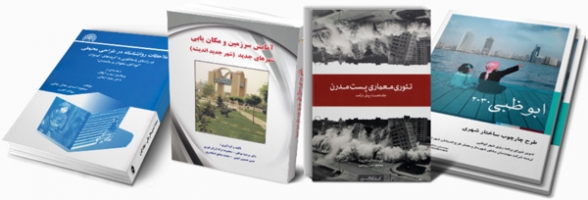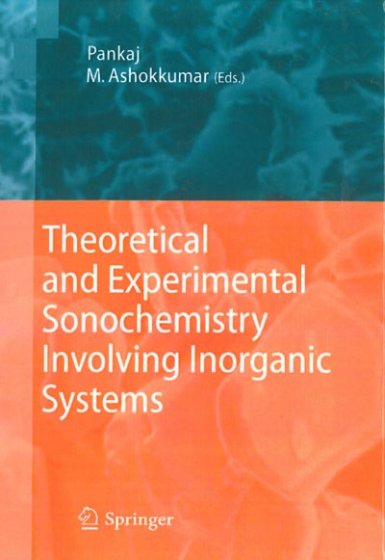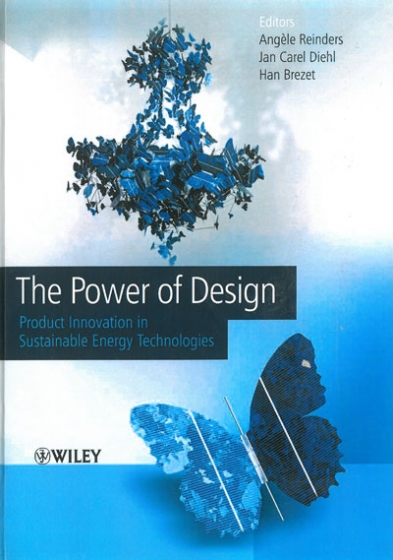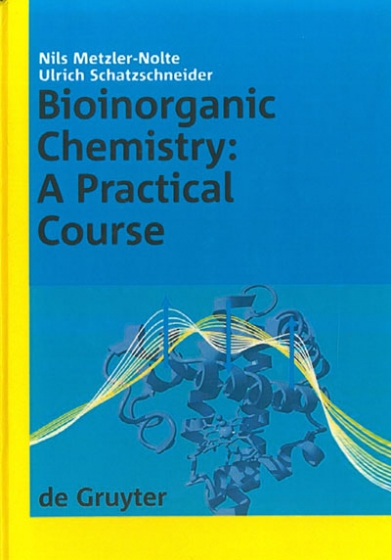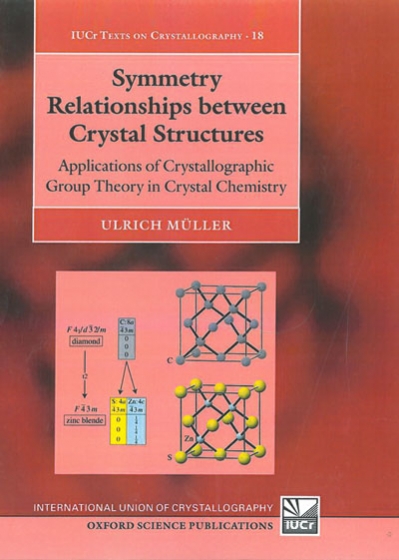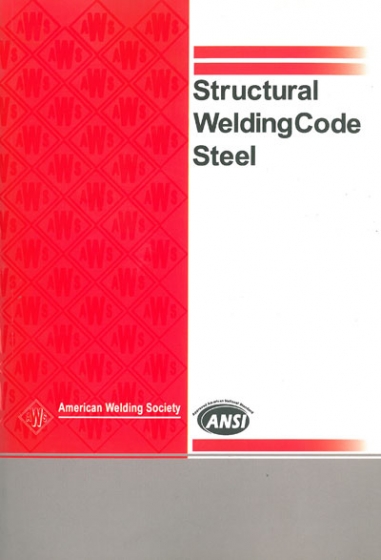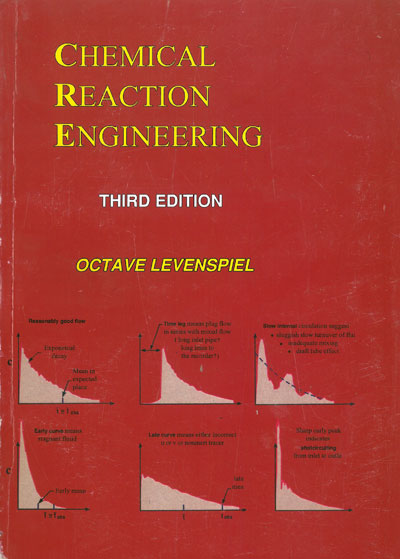توضیحات
Preface
We live in an era of unprecedented transition in science and technology education
caused by the proliferation of computing power and information. Like most other
science and technology fields, convective heat and mass transfer is already too vast
to be covered in a semester-level course even at an outline level and is yet undergoing
exponential expansion. The expansion is both quantitative and qualitative.
On the quantitative side, novel and hitherto unexplored areas are now subject to
investigation, not just by virtue of their intellectual challenge and our curiosity,
but because of their current and potential technological applications. And on the
qualitative side, massive sources of Internet-based information, powerful personal
computers, and robust and flexible software and other computational tools are now
easily accessible to even novice engineers and engineering students. This makes
the designing of a syllabus for courses such as convection heat and mass transfer
all the more challenging. Perhaps the two biggest challenges for an instructor of a
graduate-level course in convection are defining a scope for the course and striking
a reasonable balance between the now-classical analytic methods and the recently
developing modern areas. Although the importance of modern topics and methods
is evident, the coverage of these topics should not be at the expense of basics and
classical methods.
This book is the outcome of more than 10 years of teaching a graduate-level
course on convective heat and mass transfer. It also benefits from my more than
20 years of experience of teaching undergraduate heat transfer and other thermal
fluid science courses to mechanical and nuclear engineering students. The book is
designed to serve as the basis for a semester-level graduate course dealing with
theory and practice of convection heat and mass transfer. My incentive in writing
the book is to strike a balance between well-established theory and practice on the
one hand, and modern areas such as flow in microchannels and computational fluid
dynamics (CFD)–based design and analysis methods on the other. I have had much
difficulty finding such a balance in the existing textbooks while teaching convection
to graduate students and had to rely on my own class notes and recent issues of
journals for much of the syllabi of my classes.
The book is primarily concerned with convective heat transfer. Essentials of
mass transfer are also covered, although only briefly. The mass transfer material
and problems are presented such that they can be easily skipped, should that be
preferred.
The book consists of 13 chapters. Chapter 1 reviews general and introductory
material that is meant to refresh the student’s memory about the material that he or
she will need to understand the remainder of the book. Chapters 2 and 3 deal with
boundary layers and the transport processes that they control. Chapter 4 discusses
laminar internal flow, in considerably more detail than most similar textbooks, in
recognition of the importance of laminar flow in the now-ubiquitous miniature flow
passages. Chapter 5 discusses the integral method, a classical technique for the
approximate solution of boundary-layer transport equations. The fundamentals of
turbulence and classical models for equilibrium turbulence are discussed in Chapter
6, followed by the discussion of internal turbulent flow in Chapter 7. Chapter 8
is a short discussion of the effect of transpiration on convective transport processes,
and Chapter 9 deals with analogy among heat, momentum, and mass transfer processes.
Buoyancy-dominated flows are discussed in Chapters 10 and 11.
Chapter 12 is on turbulence models. These models are the bases of the nowubiquitous
CFD tools. The chapter is primarily focused on the most widely used
Reynolds-averaged Navier-Stokes (RANS)–type turbulent transport models in current
convective heat transfer research and analysis. The discussions are meant to
show the students where these models have come from, with an emphasis on how
they treat not just the fluid mechanics aspects of turbulent flow but also the transport
of heat and mass. Although access to and practice with CFD tools are helpful
for understanding these turbulence models, the chapter is written in a way that
access to and application of CFD tools are not necessary.Only some of the problems
at the end of this chapter are meant to be solved with a CFD tool. These problems,
furthermore, are quite simple and mostly deal with entrance-dominated internal turbulent
flows. Finally, Chapter 13 is a rather detailed discussion of flow in microchannels.
The importance of flow in microchannels can hardly be overemphasized. This
chapter discusses in some detail the internal gas flow situations for which significant
velocity slip and temperature jump do occur.
The book also includes 17 appendices (Appendices A–Q), which provide brief
compilations of some of themost essential properties and mathematical information
needed for analysis of convective heat and mass transfer processes.
S. Mostafa Ghiaasiaan
CONTENTS
Preface page xv
Frequently Used Notation xvii
1 Thermophysical and Transport Fundamentals . . . 1
1.1 Conservation Principles 1
1.1.1 Lagrangian and Eulerian Frames 1
1.1.2 Mass Conservation 2
1.1.3 Conservation of Momentum 3
1.1.4 Conservation of Energy 6
1.2 Multicomponent Mixtures 11
1.2.1 Basic Definitions and Relations 11
1.2.2 Thermodynamic Properties 15
1.3 Fundamentals of Diffusive Mass Transfer 17
1.3.1 Species Mass Conservation 17
1.3.2 Diffusive Mass Flux and Fick’s Law 18
1.3.3 Species Mass Conservation When Fick’s Law Applies 19
1.3.4 Other Types of Diffusion 20
1.3.5 Diffusion in Multicomponent Mixtures 20
1.4 Boundary and Interfacial Conditions 22
1.4.1 General Discussion 22
1.4.2 Gas–Liquid Interphase 24
1.4.3 Interfacial Temperature 24
1.4.4 Sparingly Soluble Gases 27
1.4.5 Convention for Thermal and Mass Transfer Boundary
Conditions 30
1.5 Transport Properties 31
1.5.1 Mixture Rules 31
1.5.2 Transport Properties of Gases and the Gas-Kinetic Theory 32
1.5.3 Diffusion of Mass in Liquids 37
1.6 The Continuum Flow Regime and Size Convention for Flow
Passages 38
Problems 39
2 Boundary Layers . . . . . . . .. . . . . 44
2.1 Boundary Layer on a Flat Plate 44
2.2 Laminar Boundary-Layer Conservation Equations 48
2.3 Laminar Boundary-Layer Thicknesses 51
2.4 Boundary-Layer Separation 53
2.5 Nondimensionalization of Conservation Equations and
Similitude 54
Problems 58
3 External Laminar Flow: Similarity Solutions for Forced Laminar Boundary Layers . . . . 61
3.1 Hydrodynamics of Flow Parallel to a Flat Plate 61
3.2 Heat and Mass Transfer During Low-Velocity Laminar Flow
Parallel to a Flat Plate 65
3.3 Heat Transfer During Laminar Parallel Flow Over a Flat Plate
With Viscous Dissipation 71
3.4 Hydrodynamics of Laminar Flow Past aWedge 73
3.5 Heat Transfer During Laminar Flow Past aWedge 78
3.6 Effects of Compressibility and Property Variations 80
Problems 85
4 Internal Laminar Flow . . . 90
4.1 Couette and Poiseuille Flows 90
4.2 The Development of Velocity, Temperature, and Concentration
Profiles 94
4.2.1 The Development of Boundary Layers 94
4.2.2 Hydrodynamic Parameters of Developing Flow 97
4.2.3 The Development of Temperature and Concentration
Profiles 100
4.3 Hydrodynamics of Fully Developed Flow 103
4.4 Fully Developed Hydrodynamics and Developed Temperature or
Concentration Distributions 107
4.4.1 Circular Tube 107
4.4.2 Flat Channel 110
4.4.3 Rectangular Channel 113
4.4.4 Triangular Channel 113
4.4.5 Concentric Annular Duct 114
4.5 Fully Developed Hydrodynamics, Thermal or Concentration
Entrance Regions 117
4.5.1 Circular Duct With Uniform Wall Temperature Boundary
Conditions 117
4.5.2 Circular Duct With Arbitrary Wall Temperature
Distribution in the Axial Direction 124
4.5.3 Circular Duct With Uniform Wall Heat Flux 126
4.5.4 Circular Duct With Arbitrary Wall Heat Flux Distribution
in the Axial Coordinate 129
4.5.5 Flat Channel With Uniform Heat Flux Boundary
Conditions 130
4.5.6 Flat Channel With Uniform Wall Temperature Boundary
Conditions 132
4.5.7 Rectangular Channel 135
4.6 Combined Entrance Region 135
4.7 Effect of Fluid Property Variations 137
Appendix 4A: The Sturm–Liouville Boundary-Value Problems 141
Problems 141
5 Integral Methods . . . . 151
5.1 Integral Momentum Equations 151
5.2 Solutions to the Integral Momentum Equation 153
5.2.1 Laminar Flow of an Incompressible Fluid Parallel to a Flat
Plate Without Wall Injection 153
5.2.2 Turbulent Flow of an Incompressible Fluid Parallel to a
Flat Plate Without Wall Injection 156
5.2.3 Turbulent Flow of an Incompressible Fluid Over a Body of
Revolution 158
5.3 Energy Integral Equation 159
5.4 Solutions to the Energy Integral Equation 161
5.4.1 Parallel Flow Past a Flat Surface 161
5.4.2 Parallel Flow Past a Flat Surface With an Adiabatic
Segment 163
5.4.3 Parallel Flow Past a Flat Surface With Arbitrary Wall
Surface Temperature or Heat Flux 165
5.5 Approximate Solutions for Flow Over Axisymmetric Bodies 167
Problems 173
6 Fundamentals of Turbulence and External Turbulent Flow . . . 177
6.1 Laminar–Turbulent Transition and the Phenomenology of
Turbulence 177
6.2 Fluctuations and Time (Ensemble) Averaging 180
6.3 Reynolds Averaging of Conservation Equations 181
6.4 Eddy Viscosity and Eddy Diffusivity 183
6.5 Universal Velocity Profiles 185
6.6 The Mixing-Length Hypothesis and Eddy Diffusivity Models 188
6.7 Temperature and Concentration Laws of theWall 192
6.8 Kolmogorov Theory of the Small Turbulence Scales 196
6.9 Flow Past Blunt Bodies 200
Problems 205
7 Internal Turbulent Flow . . . 208
7.1 General Remarks 208
7.2 Hydrodynamics of Turbulent Duct Flow 211
7.2.1 Circular Duct 211
7.2.2 Noncircular Ducts 217
7.3 Heat Transfer: Fully Developed Flow 218
7.3.1 Universal Temperature Profile in a Circular Duct 218
7.3.2 Application of Eddy Diffusivity Models for Circular Ducts 221
7.3.3 Noncircular Ducts 224
7.4 Heat Transfer: Fully Developed Hydrodynamics, Thermal
Entrance Region 224
7.4.1 Circular Duct With Uniform Wall Temperature or
Concentration 224
7.4.2 Circular Duct With Uniform Wall Heat Flux 226
7.4.3 Some Useful Correlations for Circular Ducts 229
7.4.4 Noncircular Ducts 231
7.5 Combined Entrance Region 231
Problems 238
8 Effect of Transpiration on Friction, Heat, and Mass Transfer . . . 243
8.1 Couette Flow Film Model 243
8.2 Gas–Liquid Interphase 248
Problems 256
9 Analogy Among Momentum, Heat, and Mass Transfer . . . 258
9.1 General Remarks 258
9.2 Reynolds Analogy 259
9.3 Prandtl–Taylor Analogy 261
9.4 Von Karman Analogy 263
9.5 The Martinelli Analogy 265
9.6 The Analogy of Yu et al. 265
9.7 Chilton–Colburn Analogy 267
Problems 272
10 Natural Convection . . . 275
10.1 Natural-Convection Boundary Layers on Flat Surfaces 275
10.2 Phenomenology 278
10.3 Scaling Analysis of Laminar Boundary Layers 280
10.4 Similarity Solutions for a Semi-Infinite Vertical Surface 285
10.5 Integral Analysis 289
10.6 Some Widely Used Empirical Correlations for Flat Vertical
Surfaces 294
10.7 Natural Convection on Horizontal Flat Surfaces 295
10.8 Natural Convection on Inclined Surfaces 297
10.9 Natural Convection on Submerged Bodies 298
10.10 Natural Convection in Vertical Flow Passages 300
10.11 Natural Convection in Enclosures 304
10.12 Natural Convection in a Two-Dimensional Rectangle With
Heated Vertical Sides 305
10.13 Natural Convection in Horizontal Rectangles 307
10.14 Natural Convection in Inclined Rectangular Enclosures 309
10.15 Natural Convection Caused by the Combined Thermal and
Mass Diffusion Effects 311
10.15.1 Conservation Equations and Scaling Analysis 311
10.15.2 Heat and Mass Transfer Analogy 316
10.16 Solutions for Natural Convection Caused by Combined
Thermal and Mass Diffusion Effects 317
Problems 327
11 Mixed Convection . . . 332
11.1 Laminar Boundary-Layer Equations and Scaling Analysis 332
11.2 Solutions for Laminar Flow 337
11.3 Stability of Laminar Flow and Laminar–Turbulent Transition 341
11.4 Correlations for Laminar External Flow 343
11.5 Correlations for Turbulent External Flow 348
11.6 Internal Flow 349
11.6.1 General Remarks 349
11.6.2 Flow Regime Maps 351
11.7 Some Empirical Correlations for Internal Flow 351
Problems 358
12 Turbulence Models . . . . . . . . . . . . . 362
12.1 Reynolds-Averaged Conservation Equations and the Eddy
Diffusivity Concept 362
12.2 One-Equation Turbulence Models 364
12.3 Near-Wall Turbulence Modeling and Wall Functions 367
12.4 The K–ε Model 371
12.4.1 General Formulation 371
12.4.2 Near-Wall Treatment 374
12.4.3 Turbulent Heat and Mass Fluxes 376
12.5 Other Two-Equation Turbulence Models 376
12.6 The Reynolds Stress Transport Models 377
12.6.1 General Formulation 377
12.6.2 Simplification for Heat and Mass Transfer 380
12.6.3 Near-Wall Treatment of Turbulence 380
12.6.4 Summary of Equations and Unknowns 381
12.7 Algebraic Stress Models 381
12.8 Turbulent Models for Buoyant Flows 382
12.9 Direct Numerical Simulation 385
12.10 Large Eddy Simulation 390
12.11 Computational Fluid Dynamics 394
Problems 395
13 Flow and Heat Transfer in Miniature Flow Passages .. 397
13.1 Size Classification of Miniature Flow Passages 397
13.2 Regimes in Gas-Carrying Vessels 399
13.3 The Slip Flow and Temperature-Jump Regime 402
13.4 Slip Couette Flow 406
13.5 Slip Flow in a Flat Channel 408
13.5.1 Hydrodynamics of Fully Developed Flow 408
13.5.2 Thermally Developed Heat Transfer, UHF 410
13.5.3 Thermally Developed Heat Transfer, UWT 413
13.6 Slip Flow in Circular Microtubes 415
13.6.1 Hydrodynamics of Fully Developed Flow 415
13.6.2 Thermally Developed Flow Heat Transfer, UHF 416
13.6.3 Thermally Developed Flow Heat Transfer, UWT 418
13.6.4 Thermally Developing Flow 420
13.7 Slip Flow in Rectangular Channels 422
13.7.1 Hydrodynamics of Fully Developed Flow 422
13.7.2 Heat Transfer 424
13.8 Slip Flow in Other Noncircular Channels 426
13.9 Compressible Flow in Microchannels with Negligible
Rarefaction 427
13.9.1 General Remarks 427
13.9.2 One-Dimensional Compressible Flow of an Ideal Gas
in a Constant-Cross-Section Channel 428
13.10 Continuum Flow in Miniature Flow Passages 431
Problems 441
APPENDIX A: Constitutive Relations in Polar Cylindrical and Spherical Coordinates . . . . . . . . . . . . . . . . . . . . . . . . . 449
APPENDIX B: Mass Continuity and Newtonian Incompressible Fluid Equations of Motion in Polar Cylindrical and Spherical Coordinates . . . . . . . 451
APPENDIX C: Energy Conservation Equations in Polar Cylindrical and Spherical Coordinates for Incompressible Fluids With Constant Thermal Conductivity . . . .. . . 453
APPENDIX D: Mass-Species Conservation Equations in Polar Cylindrical and Spherical Coordinates for Incompressible Fluids . . . . . . . . . . 454
APPENDIX E: Thermodynamic Properties of Saturated Water and Steam . . . 456
APPENDIX F: Transport Properties of Saturated Water and Steam . . . . . . . 458
APPENDIX G: Properties of Selected Ideal Gases at 1 Atmosphere . . . . . . . 459
APPENDIX H: Binary Diffusion Coefficients of Selected Gases in Air at 1 Atmosphere . . . . . . . . . . . . . . . . . . . . . . 465
APPENDIX I: Henry’s Constant, in bars, of Dilute Aqueous Solutions of Selected Substances at Moderate Pressures . .. 466
APPENDIX J: Diffusion Coefficients of Selected Substances in Water at Infinite Dilution at 25 ◦C . . . . . . . . . . . . . . .467
APPENDIX K: Lennard–Jones Potential Model Constants for Selected Molecules . . . . . . . . . . . . . . . . . . . . . . . 468
APPENDIX L: Collision Integrals for the Lennard–Jones Potential Model . . 469
APPENDIX M: Some RANS-Type Turbulence Models . . 470
M.1 The Spalart–Allmaras Model 470
M.2 The K–ω Model 472
M.3 The K–ε Nonlinear Reynolds Stress Model 475
M.4 The RNG K–ε Model 477
M.5 The Low-Re RSM of Launder and Shima 478
APPENDIX N: PhysicalConstants . . . . . . . . . . .. . . . . . . . . 480
APPENDIX O: Unit Conversions . . . . . . . . . . . . . . 482
APPENDIX P: Summary of ImportantDimensionlessNumbers . . . . 485
APPENDIX Q: Summary of Some Useful Heat Transfer and
Friction-FactorCorrelations . . . . . . . . . . . . . . . . . . 487
References 501
Index 517
مشخصات Convective Heat and Mass Transfer
| مشخصات کتاب | |
|---|---|
| ناشر: | Cambridge |
| مولف: | S. Mostafa Ghiaasiaan |
| تعداد صفحه: | 548 |
| قطع : | وزیری |
| نوبت چاپ: | اول |
| سال چاپ : | 2011 |
| نوع چاپ : | تک رنگ |
| نوع جلد : | گالینگور |
| نوع کاغذ : | تحریر |
| شرح DVD / CD : | ندارد |
| شابک: | 9781107003507 |
| وضعیت : | موجود در بازار |
| کد کتاب | 9781107003507 |

